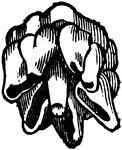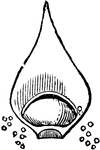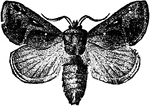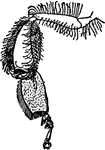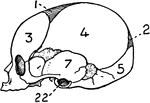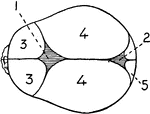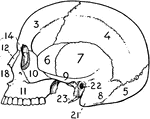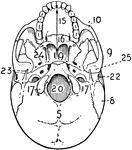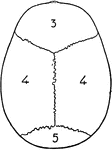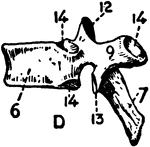
Arbor-Vitae
One of the scales or carpels of the American Arbor-Vitae, the inside exposed to view, showing a pair…

Hog Louse
A detailed view of the scansorial claw of the hog-louse of the Hermatopinus urius species.

Whirligig Beetle Larva
The whirligig beetles are a family (Gyrinidae) of water beetles that normally live on the surface of…

Bellerophon and the Chimaera
Bellerophon, a song of Glaucus, King of Ephyre, by Eurymede, was at first called Hipponous. The murder…
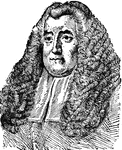
Sir William Blackstone
(1723-1780) An English jurist who in 1759 published a new edition of the Great Charter and Charter…
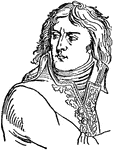
Napoleon Bonaparte
(1769-1821) King of Italy, Mediator of the Swiss Confederation and Protector of the Confederation of…
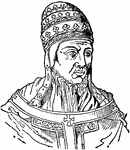
Saint Boniface
(672-754) Saint Boniface was the Apostle of the Germans, born Winfrid or Wynfrith, was a missionary…

Julius Caesar
(100 BC- 44 BC) A Roman military and political leader and one of the most influential men in world history.
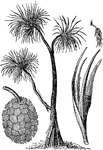
Screw Pine
Also known as Pandanus and is native to the Old World tropics and western Pacific Ocean islands.

Rice
Rice is a species of grass native to tropical and subtropical southern and southeastern Asia and Africa.…
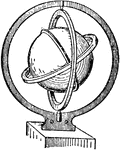
Gyroscope
Three suspended concentric circles free to move independently of each other at right angles.

Conic Sections 2D
Two dimensional view of the cuts required to create the conic sections hyperbola, parabola, ellipse,…

Side view of lancelet
"Side view of Amphioxus: fs, fin supports; nc, notochord; ot, oral tentacles."—Finley,…

King Charles Spaniel
"The King Charles spaniel, a breed of toy spaniel. It is black and tan."—Finley, 1917
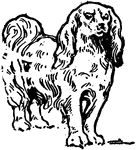
Japanese Spaniel
"The Japanese spaniel, sometimes called the 'sleeve dog', is black and white in color; coat massive…
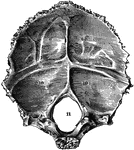
Occipital Bone of the Human Skull
Occipital bone of the human skull, inner surface. It is situated at the back and base of the skull.…

Human Vomer Nasal Bone
Vomer bone, a single bone placed at the back part of the nasal cavity, and forms part of the septum…
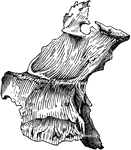
Human Palate Bone
Palate bone. Palate bones form the back part of the roof of the mouth; part of the floor and outer wall…
Human Spinal Column
Side view of spinal column, without sacrum and coccyx. Labels: 1 to 7, cervical vertebrae; 8 to 19,…

Human Sternum Bone
Sternum, front and side view. The sternum, or breast bone, is a flat narrow bone, situated in the median…
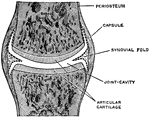
A Simple Complete Joint
A simple complete joint, one type of movable articulation. The synovial membrane is represented by dotted…

Muscles of the Human Back
Muscles of the back. Labels: 50, latissimus dorsi; 51, trapezius; 52, deltoid. The muscles of the back…

Muscles of the Chest and Abdomen
Muscles of the back. Labels: 50, latissimus dorsi; 51, trapezius; 52, deltoid. The muscles of the back…
Muscles of the Leg
Muscles of the leg, superficial view of the calf. Labels: 22, tendo Achillis (Achilles heel); 21, gastrocnemius;…

General View of the Sympathetic Nervous System
General view of the sympathetic nervous. Labels: 1,2,3, cervical ganglia; 4, 1st thoracic ganglion;…

Heart and Lungs
The heart and lungs. 1, right ventricle; 3, right auricle (atrium); 6, 7, pulmonary artery; 9, aorta;…
